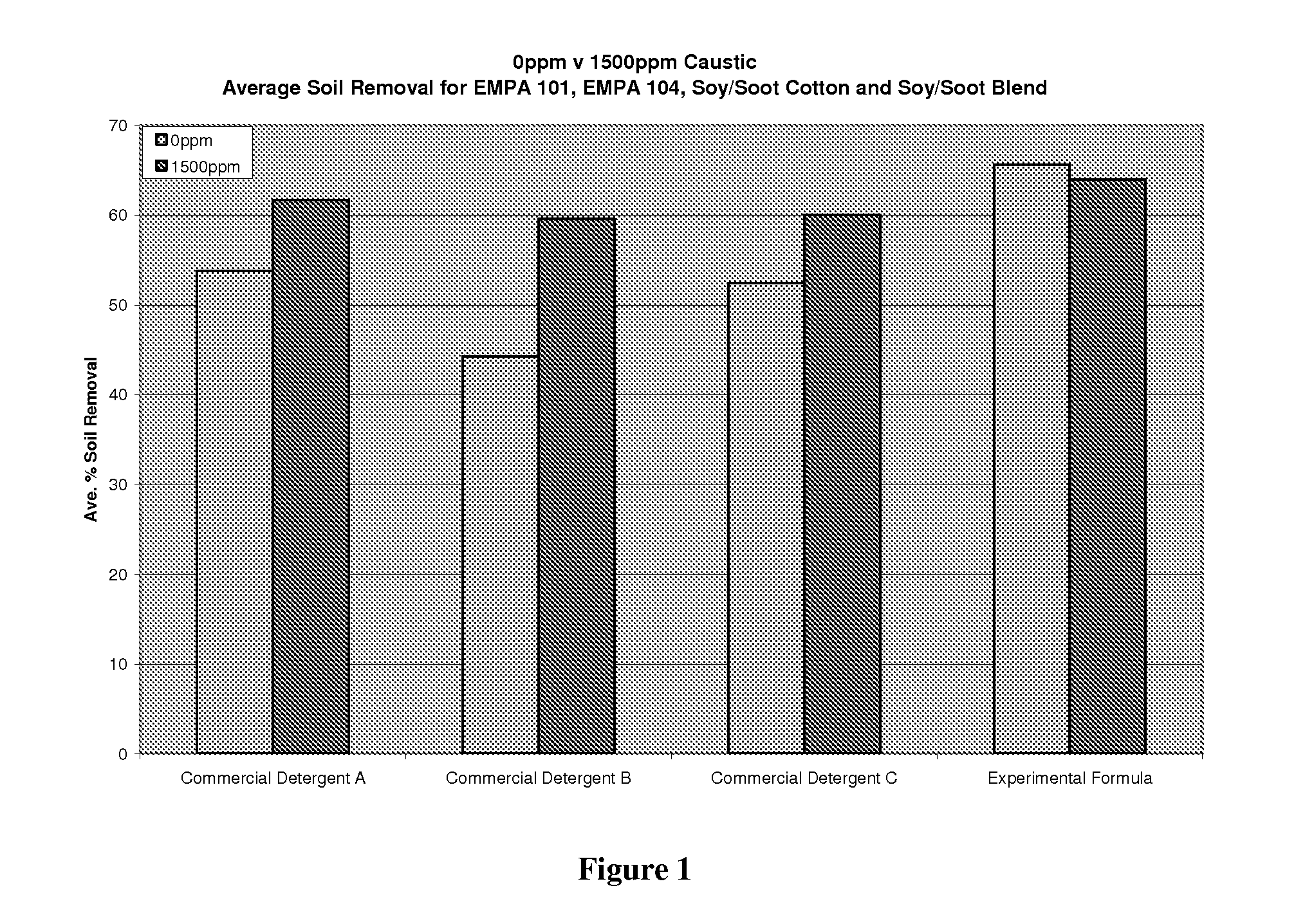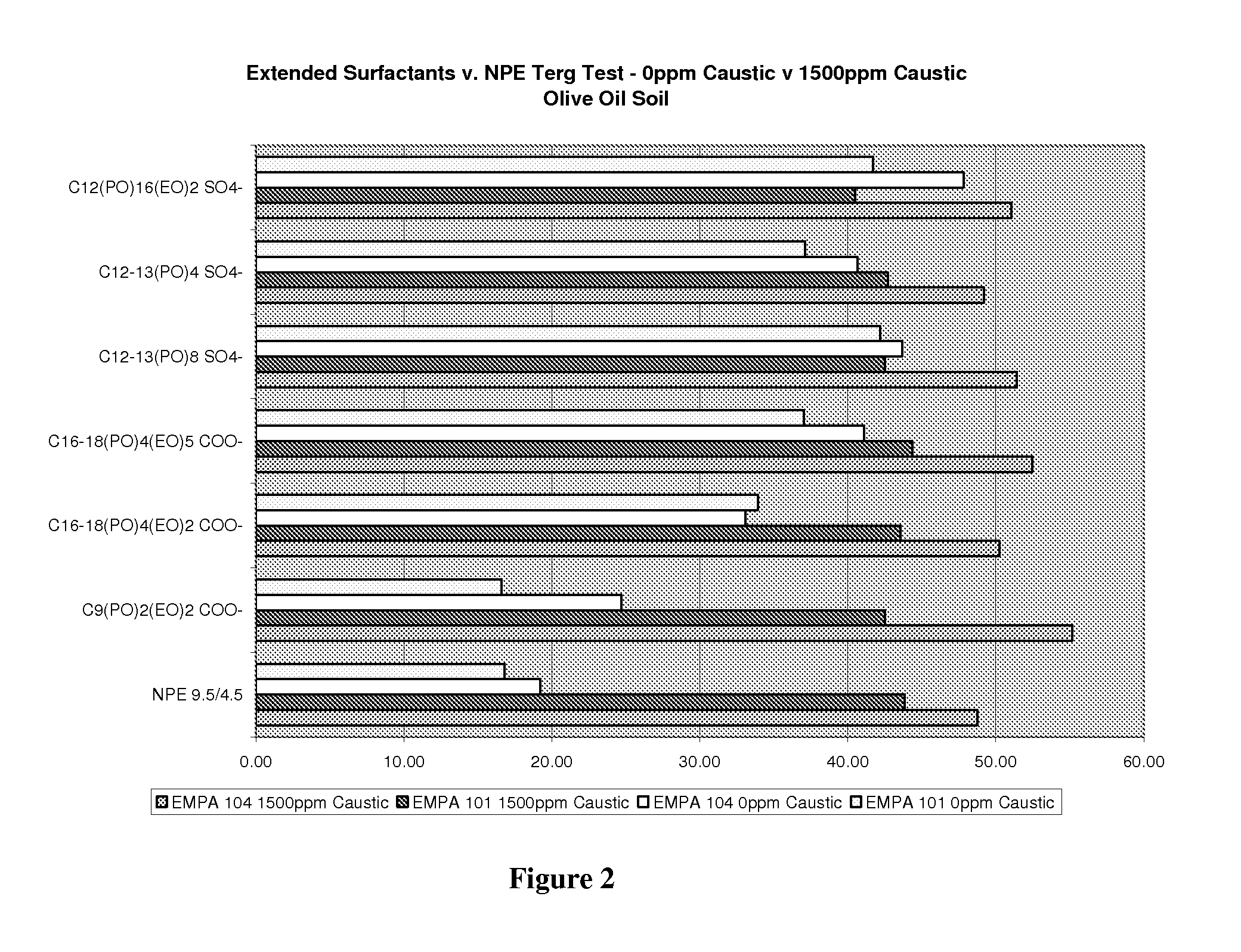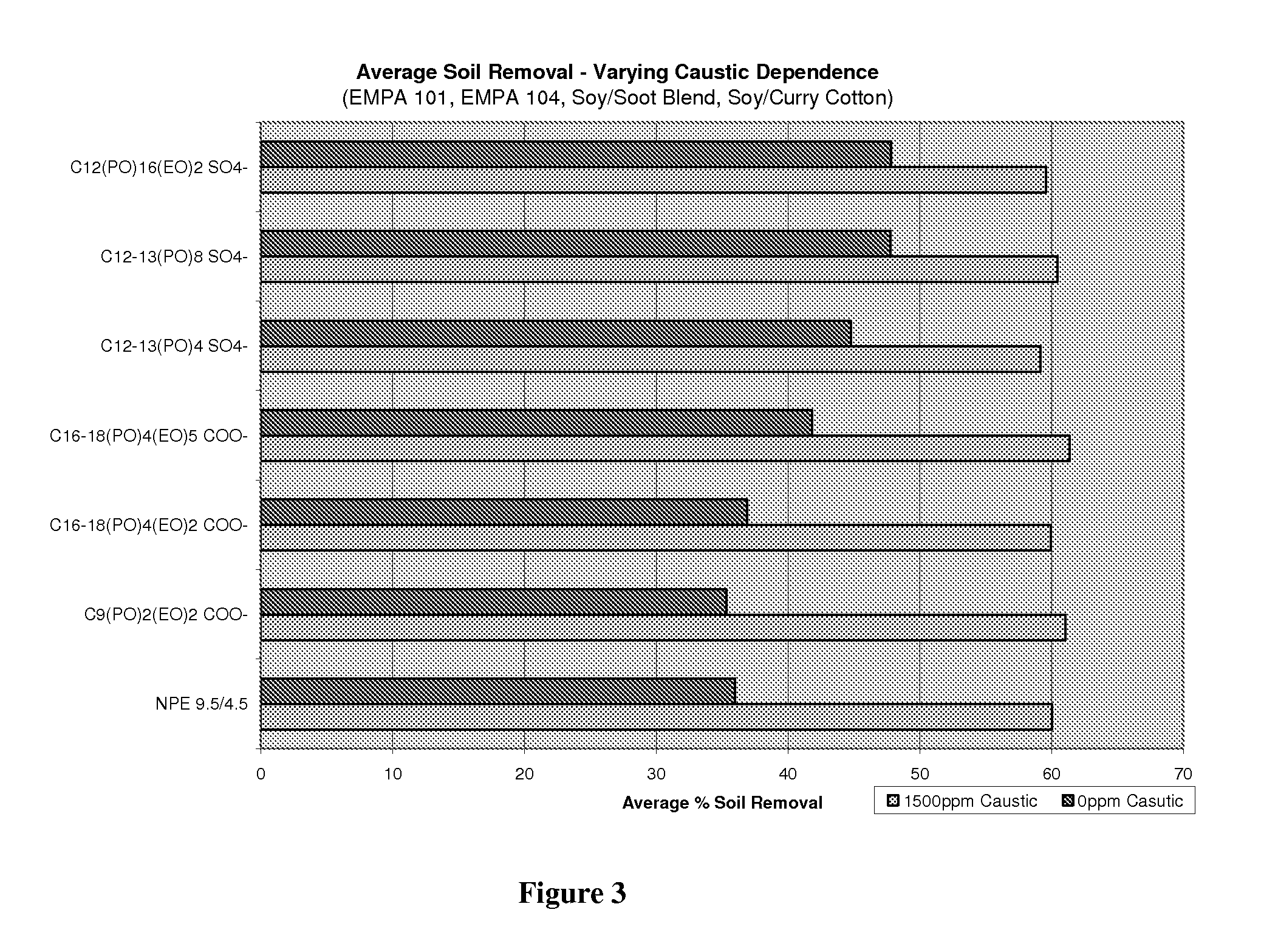Reduced caustic laundry detergents based on extended chain surfactants
a technology of extended chain surfactants and laundry detergents, applied in the direction of detergent compounding agents, liquid soaps, liquid cleaning, etc., can solve the problems of disfavored npes, contaminating water, vegetation and marine life, and npes that are not readily biodegradable, so as to reduce the dependence on caustics and improve cleaning ability
- Summary
- Abstract
- Description
- Claims
- Application Information
AI Technical Summary
Benefits of technology
Problems solved by technology
Method used
Image
Examples
example 1a
Extended Surfactants Compared with Formulas Containing NPEs and AEs
[0121]A tergitometer test was performed to determine the efficacy of an extended surfactant formula against commercial detergent formulas, listed below. The following conditions were used in the testing; DI water, 140° F., 10 minute wash, 1500 ppm active surfactant, 100 rpm, 2 half swatches of each of the following soils EMPA 101, EMPA 104, Soy / Soot Blend, Soy / Soot Cotton swatches. Each formula was tested with 0 ppm caustic and 1500 ppm caustic (from 50% NaOH) to determine the dependence on caustic for soil removal.
[0122]The results show that Commercial Detergent B relied heavily on caustic to increase soil removal, with a difference of 15.36% soil removal between 1500 ppm and 0 ppm caustic. The Commercial Detergent A and Commercial Detergent C formulas showed a significant caustic dependence, though less than the Commercial Detergent B formula, with 7.61 and 7.93% better soil removal for the 4 soil swatches respecti...
example 1b
Reduced Caustic Dependence with Increasing Level of PO in the Anionic Extended Surfactant
[0124]A tergitometer test was performed to determine the efficacy of various anionic extended surfactants. The performance of the formulas containing the various extended surfactants was compared to Commercial Detergent A. The formulas used are listed below. The following conditions were used in the testing; DI water, 140° F., 10 minute wash, 1500 ppm active surfactant, 70 rpm, 3 swatches of each of the following soils EMPA 101, EMPA 104, Soy / Soot Blend, Soy / Curry Cotton swatches. Each formula was tested with 0 ppm caustic and 1500 ppm caustic (from 50% NaOH) to determine the dependence on caustic for soil removal.
[0125]The following extended anionic surfactants were used in this testing:
StructurePO extensionX-AES, 23%C12(PO)16(EO)2SO4−16ALFOTERRA 123-4S, 30%C12-13(PO)4SO4−4ALFOTERRA 123-8S, 30%C12-13(PO)8SO4−8MARLOWET 4561, 90%C16-18(PO)4(EO)5COO−4MARLOWET 4560, 90%C16-18(PO)4(EO)2COO−4MARLOWET...
example 1c
Reduced Dependence on Caustic Across a Broad Range of Caustic Levels with 16PO Extended Anionic
[0128]A tergitometer test was performed with an extended surfactant formula and varying caustic levels to determine if there is a point at which the formula shows a dependence on caustic. The following conditions were used in the testing; DI water, 150° F., 10 minute wash, 100 rpm, and 9.39 g / L extended formula (listed below) added to the wash pot. A Builder, with a high recommended alkalinity use level at and 0, 1, 3, 5, 7, 9 and 11 grams of Builder per 1 L wash solution added into wash pot. Terry swatches were soiled with 0.30 g of Soybean oil and allowed to set overnight. Three soiled swatches were used in each wash solution.
[0129]The extended anionic surfactant used in this formula is the X-AES with 16 PO. The results of this testing show there is no point at which caustic alkalinity improves soil removal. This is consistent with the previous examples, wherein the extended anionics wit...
PUM
| Property | Measurement | Unit |
|---|---|---|
| alkalinity | aaaaa | aaaaa |
| detergent | aaaaa | aaaaa |
| weight | aaaaa | aaaaa |
Abstract
Description
Claims
Application Information
 Login to View More
Login to View More - R&D
- Intellectual Property
- Life Sciences
- Materials
- Tech Scout
- Unparalleled Data Quality
- Higher Quality Content
- 60% Fewer Hallucinations
Browse by: Latest US Patents, China's latest patents, Technical Efficacy Thesaurus, Application Domain, Technology Topic, Popular Technical Reports.
© 2025 PatSnap. All rights reserved.Legal|Privacy policy|Modern Slavery Act Transparency Statement|Sitemap|About US| Contact US: help@patsnap.com



